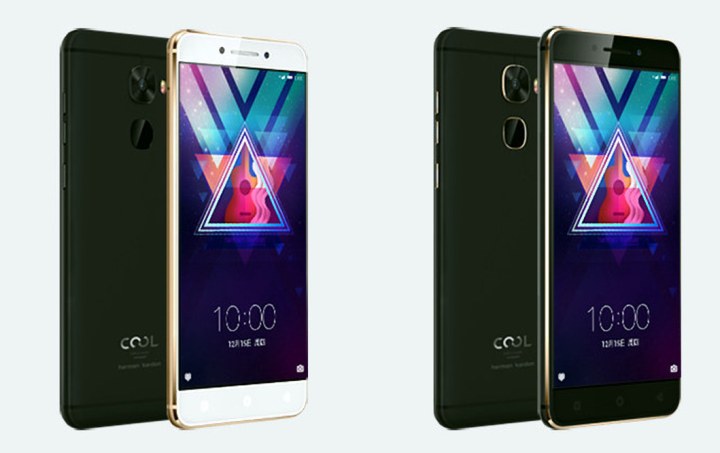
The Cool S1 features a metallic body, a 5.5-inch full HD (1,920 x 1,080 pixels) screen, and Qualcomm’s 2.35 GHz Snapdragon 821 processor under the hood. It’s got a 16-megapixel rear camera with phase detection autofocus, 4K recording, and a dual-LED flash, and 8-megapixel selfie sensor. Audio’s channeled through two front-facing speakers with premium Harman Clari-Fi audio technology. In terms of equipment, the Cool S1 has a USB Type-C connector, a combination 4G LTE and Bluetooth 4.1 radio, and a dual SIM card slot, a fingerprint sensor, and a conspicuous absence of 3.5mm headphone jack.
The Cool S1 runs the latest iteration of LeEco’s Emotion UI, version 5.8, atop Android Marshmallow 6.0. It is powered by a 4,070mAh battery that supports Qualcomm’s Quick Charge 3.0, a rapid charging standard that can deliver up to 80 percent charge in just 35 minutes.
The Cool S1 comes in two storage configurations, a 64GB model with 6GB of RAM and a 32GB model with 4GB of RAM, neither of which are particularly pricey. The former retails for 2,700 Yuan ($389), and the latter for 3,200 Yuan ($460). If you were hoping for a stateside bargain, though, you’re out of luck: both are bound exclusively for China.
It’s not the first time Coolpad and LeEco have joined forces. The two teamed up for the release of the Cool1 Dual, an affordable ($226) smartphone with two rear-facing cameras, in August. In November, the two released the midrange Cool Changer 1C.
It’s no surprise. LeEco became Coolpad’s largest shareholder in October, with ambitions to jumpstart the latter company’s worldwide growth. It has seven major research and development centers around the world. Coolpad sold an estimated 50 to 60 million smartphones in 2016 and is projected to ship as many as 100 million in 2017. And it anticipates a 100 percent year-over-year increase in overseas market sales within the next three to five years.
In the wake of LeEco’s solvency problems, its near-term international sales are unclear. But one thing’s for certain: in its home country of China, it’s not slowing down anytime soon.
Editors' Recommendations
- The Nothing Phone 1 won’t be coming to the U.S. after all
- You probably won’t see Samsung’s new 200-megapixel camera on the Galaxy S22
- Motorola’s Moto G7 range offers compelling phones that won’t break the bank


